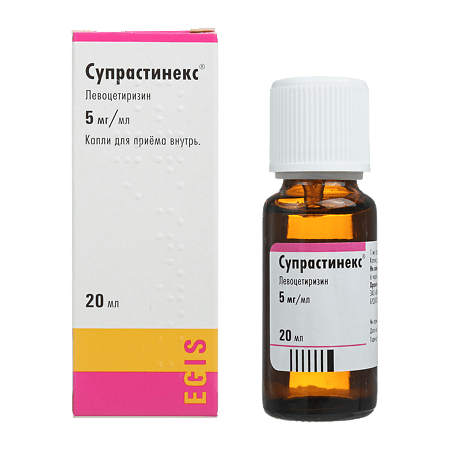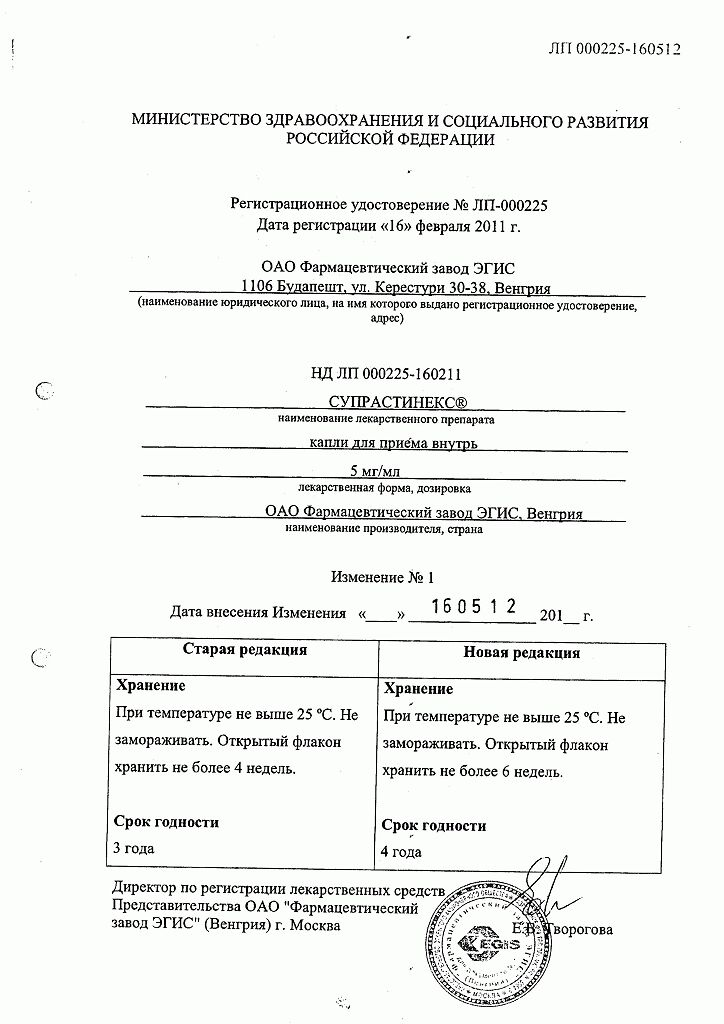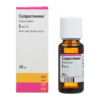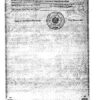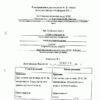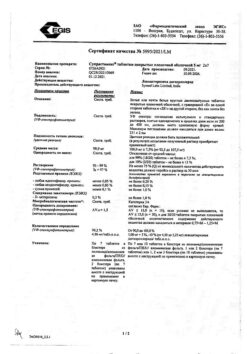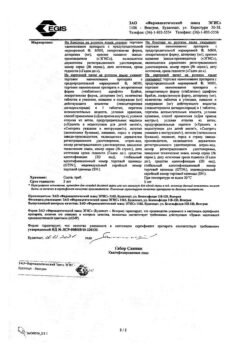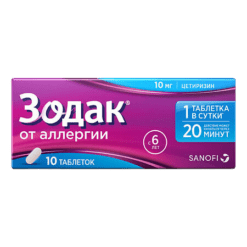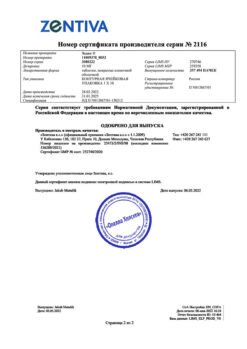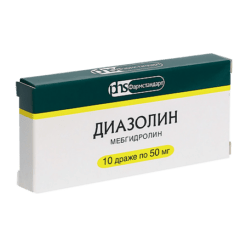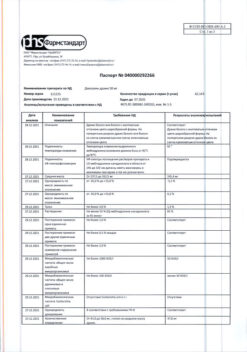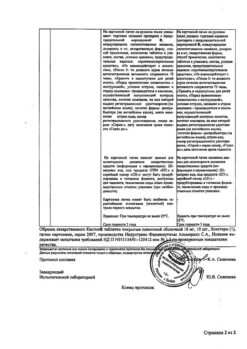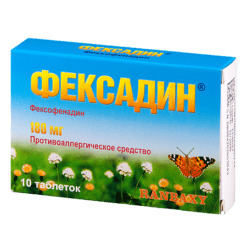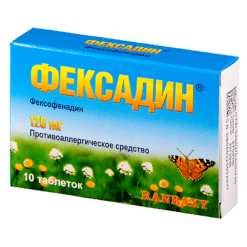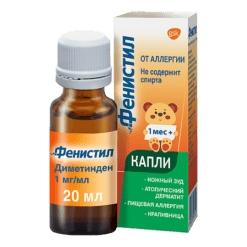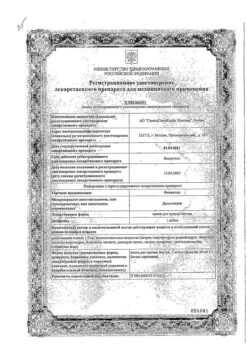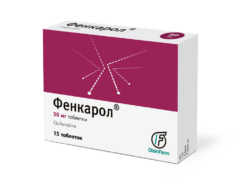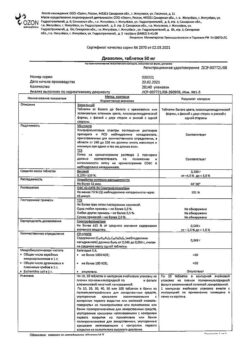No products in the cart.
Description
anti-allergic agent H1-histamine receptor blocker
ATX code: R06AE09
Pharmacological properties
Pharmacodynamics
Anti-allergic agent. Enantiomer of cetirizine; competitive histamine antagonist; blocks H1-histamine receptors, affinity for which is 2 times higher than for cetirizine. It influences the histamine-dependent stage of allergic reactions; it reduces migration of eosinophils, decreases vascular permeability and limits the release of inflammatory mediators.
It prevents and facilitates the development of allergic reactions, has antiexudative, antipruritic effects; it has practically no anticholinergic and antiserotoninergic action. In therapeutic doses has almost no sedative effect.
The action begins 12 hours after a single dose in 50% of patients, after 1 hour in 95% of patients and lasts for 24 hours.
Pharmacokinetics
The pharmacokinetics is linear. Absorption is fast when administered orally; eating has no effect on completeness of absorption, but reduces its speed. Bioavailability is 100%. Time to reach maximum concentration (TCmax) – 0.9 h, maximum concentration (Cmax) – 207 ng/ml. Volume of distribution is 0.4 l/kg.
The binding to plasma proteins is 90%. Less than 14% of the drug is metabolized in the liver by O-dealkylation to form pharmacologically inactive metabolite. Half-life (T1/2) is 7-10 hours. Total clearance is 0.63 ml/min/kg. Completely eliminated from the body within 96 hours. Excreted by the kidneys (85.4%). In renal failure (creatinine clearance less than 40 ml/min) clearance is decreased (in patients on hemodialysis – by 80%), T1/2 is prolonged. Less than 10% is removed during hemodialysis.
It penetrates into breast milk.
Indications
Indications
Symptomatic treatment of year-round (persistent) and seasonal allergic rhinitis and conjunctivitis (itching, sneezing, rhinorrhea, lacrimation, hypermia, conjunctiva); hay fever (hay fever); urticaria, incl. chronic idiopathic urticaria; Quincke’s edema; allergic dermatoses, accompanied by itching and rashes.
Pharmacological effect
Pharmacological effect
antiallergic agent H1-histamine receptor blocker
ATX code: R06AE09
Pharmacological properties
Pharmacodynamics
Antiallergic agent. Enantiomer of cetirizine; competitive histamine antagonist; blocks H1-histamine receptors, the affinity for which is 2 times higher than that of cetirizine. Affects the histamine-dependent stage of allergic reactions; reduces the migration of eosinophils, reduces vascular permeability, limits the release of inflammatory mediators.
Prevents the development and facilitates the course of allergic reactions, has an antiexudative and antipruritic effect; has virtually no anticholinergic and antiserotonergic effects. In therapeutic doses it has virtually no sedative effect.
The action begins 12 hours after taking a single dose in 50% of patients, after 1 hour in 95%, and continues for 24 hours.
Pharmacokinetics
Pharmacokinetics is linear. Rapidly absorbed when taken orally; food intake does not affect the completeness of absorption, but reduces its speed. Bioavailability – 100%. Time to reach maximum concentration (TCmax) – 0.9 hours, maximum concentration (Cmax) – 207 ng/ml. The volume of distribution is 0.4 l/kg.
Communication with plasma proteins – 90%. Less than 14% of the drug is metabolized in the liver by O-dealkylation to form a pharmacologically inactive metabolite. The half-life (T1/2) is 7-10 hours. The total clearance is 0.63 ml/min/kg. Completely excreted from the body within 96 hours. Excreted by the kidneys (85.4%). In case of renal failure (creatinine clearance less than 40 ml/min), clearance decreases (in patients on hemodialysis – by 80%), T1/2 – lengthens. Less than 10% is removed during hemodialysis.
Passes into breast milk.
Special instructions
Special instructions
Suprastinex drops are not recommended for use in children under 2 years of age due to insufficient data on the administration of the drug.
During the treatment period, it is recommended to refrain from drinking ethanol.
Suprastinex® drops can cause allergic reactions (sometimes late), as they contain methyl parahydroxybenzoate and propyl parahydroxybenzoate.
Impact on the ability to drive vehicles and operate machinery
During the treatment period, it is recommended to refrain from engaging in potentially hazardous activities that require increased concentration and speed of psychomotor reactions.
Active ingredient
Active ingredient
Levocetirizine
Composition
Composition
Active substance:
Levocetirizine dihydrochloride 0.1 g (1 ml contains 5 mg of levocetirizine dihydrochloride).
Excipients: glycerol (85%) 5 g, propylene glycol 7 g, sodium saccharinate 0.2 g, sodium acetate trihydrate 0.12 g, methyl parahydroxybenzoate 0.027 g, propyl parahydroxybenzoate 0.003 g, glacial acetic acid 0.010 g, purified water up to 20 ml.
Pregnancy
Pregnancy
Animal studies have shown no direct or indirect harmful effects on pregnancy, embryonic or fetal development, childbirth or postnatal development.
Contraindications
Contraindications
Hypersensitivity to the active (including piperazine derivatives) or any auxiliary component of the drug; severe renal failure (creatinine clearance less than 10 ml/min); children under 2 years of age (due to lack of clinical data); pregnancy and lactation period.
With caution
Chronic renal failure, old age (possibly decreased glomerular filtration).
Side Effects
Side Effects
The frequency parameters used below for side effects are defined as follows: Very common: >1/10; frequent: 1/100; uncommon: 1/1000; rare: 1/10000; very rare: Immune system disorders:
very rarely – allergic reactions, including anaphylaxis.
Metabolism:
very rarely – weight gain.
From the central and peripheral nervous system:
often – drowsiness, headache, increased fatigue; infrequently – asthenia; rarely – migraine, dizziness.
From the respiratory system:
very rarely – dyspnea.
From the gastrointestinal tract:
often – dry mouth, infrequently – abdominal pain, very rarely – nausea, dyspepsia.
From the side of subcutaneous fat:
very rarely – angioedema, itching, rash, urticaria.
From the laboratory examination parameters:
very rarely – changes in functional “liver” tests.
If any side effects occur, incl. not specified in the instructions, you must consult a doctor.
Interaction
Interaction
Interaction studies of levocetirizine have shown no clinically significant interactions with pseudoephedrine, cimetidine, ketoconazole, erythromycin, azithromycin, glipizide and diazepam.
Combined use with macrolides or ketoconazole did not cause significant changes in the ECG.
Theophylline (400 mg/day) reduces the total clearance of levocetirizine by 16%, while the kinetics of theophylline does not change.
In sensitive patients, concomitant use of levocetirizine with alcohol or other CNS depressants may cause effects on the central nervous system.
Overdose
Overdose
Symptoms: overdose in adults is manifested by drowsiness, in children – agitation, anxiety, which are replaced by drowsiness.
Storage conditions
Storage conditions
At a temperature not exceeding 25 °C (do not freeze)
Shelf life
Shelf life
4 years
Manufacturer
Manufacturer
EGIS, Hungary
Additional information
| Shelf life | 4 years |
|---|---|
| Conditions of storage | At a temperature not exceeding 25 °C (do not freeze) |
| Manufacturer | EGIS, Hungary |
| Medication form | oral drops |
| Brand | EGIS |
Other forms…
Related products
Buy Suprastinex, drops 5 mg/ml 20 ml with delivery to USA, UK, Europe and over 120 other countries.

